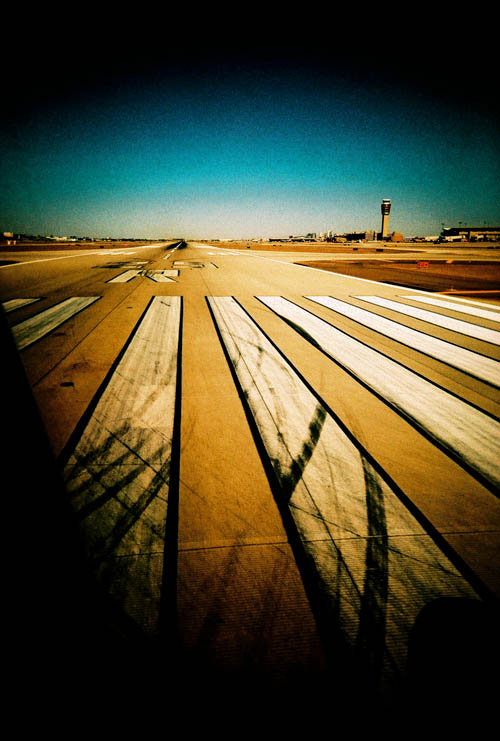The Moving, Self-Powered Room
During the New York City blackout of 1965, roughly "one thousand overseas passengers were affected," the New York Times reported at the time, and "many of them were put up in nearby hotels or motels."

[Image: "Runway at Sky Harbor Airport" by Kevin Dooley, via Creative Commons].
A slightly different scenario unfolded at the city's airports, however:
Next time, perhaps, when the lights go out in your own home city, that jumbo jet parked nearby on an airport runway will be the best place for you to go: an aboveground disaster shelter, independent from the grid whose loss it temporarily saves you from.
(You can watch a short video about the blackout, courtesy of James Burke; here is part one).

[Image: "Runway at Sky Harbor Airport" by Kevin Dooley, via Creative Commons].
A slightly different scenario unfolded at the city's airports, however:
- At Kennedy, American Airplanes rolled out all its planes, which are equipped with independent power systems, and loaded eight hundred stranded passengers. They were fed a meal and shown motion pictures until the lights came back.
Next time, perhaps, when the lights go out in your own home city, that jumbo jet parked nearby on an airport runway will be the best place for you to go: an aboveground disaster shelter, independent from the grid whose loss it temporarily saves you from.
(You can watch a short video about the blackout, courtesy of James Burke; here is part one).





Comments are moderated.
If it's not spam, it will appear here shortly!
interesting. seems a little in line with the vehicle to grid proposals that the smart grid would allow...
Jumbo jet? Regional jet, more likely, cramped for space, no movies to show, and only a few pretzels to offer in the way of food. Not to mention that without power to run the scanners and x-ray machines, the TSA would never let you get anywhere near it.
Post a Comment